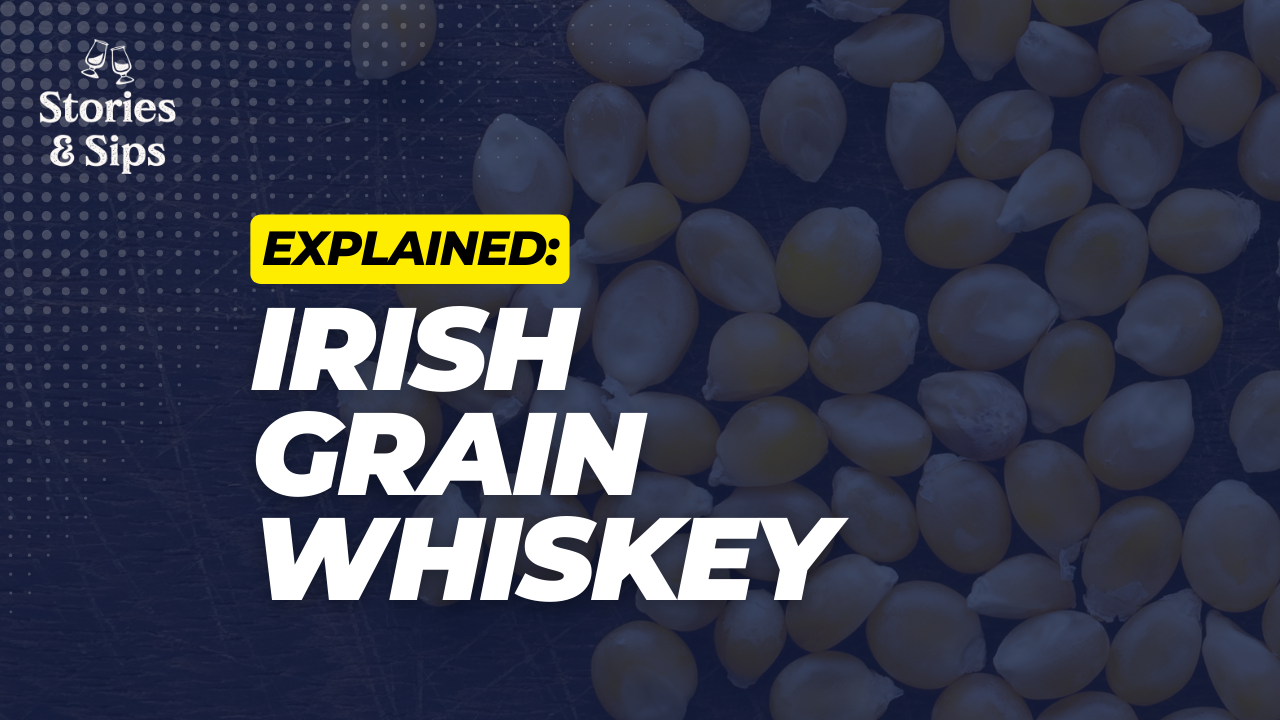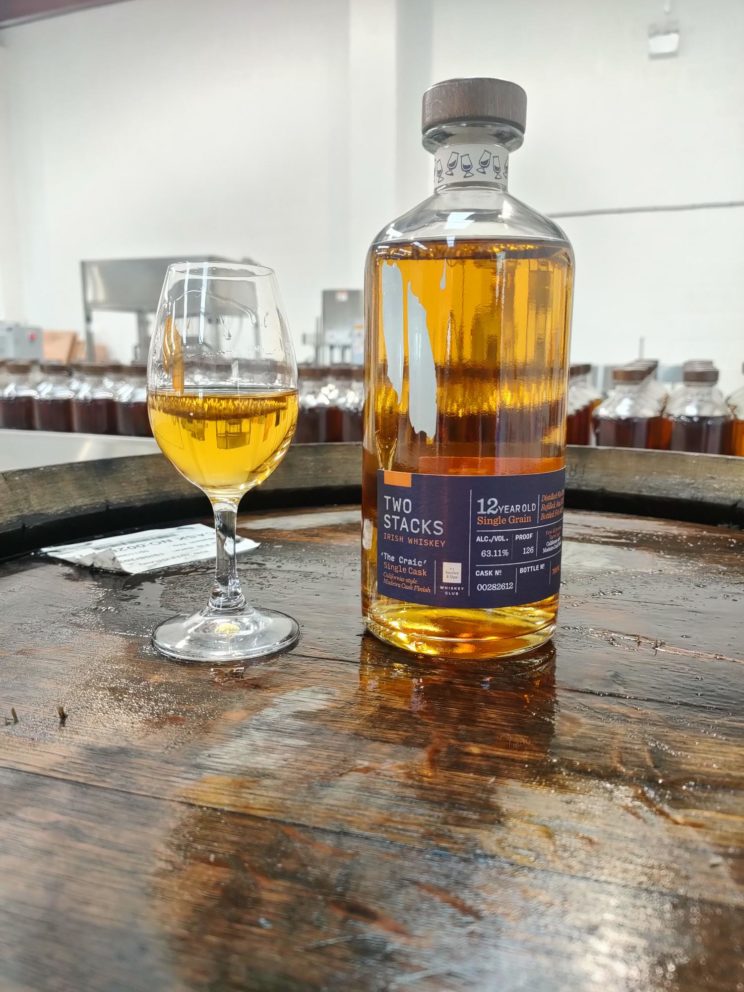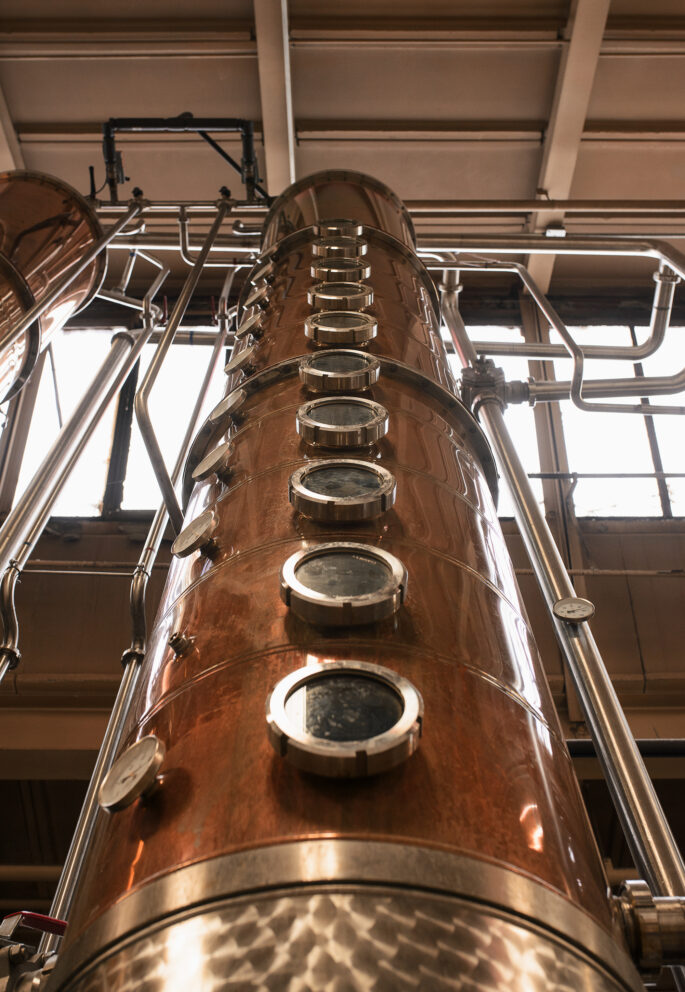
What is Irish Grain Whiskey?
Irish grain whiskey (or single grain whiskey if made at one single distillery) is the most produced style of whiskey made on the island of Ireland by volume and is one of the three styles of whiskey produced in the country alongside Irish malt whiskey and Irish pot still whiskey.
Grain whiskey is made in Ireland from a mixture or mash of malted (maximum 30%) and unmalted grains. It is distilled using a continuous column still, which allows for continuous whiskey production as opposed to batch production and delivers a higher alcohol content than the pot stills used to make Irish single malt or single pot still whiskey.
Midleton Distillery uses predominantly maize (90%+) in its grain whiskey production, sourced from Bayonne in the southwest of France, while Tullamore Distillery uses wheat, as two examples of different approaches to grain whiskey production. Historically the Scots have favored the use of wheat in their grain whisky production while the Irish have tended to use maize/corn predominantly.
Most of the grain whiskey produced in Ireland is blended with malt whiskey or pot still whiskey to create blended whiskeys like Jameson, Powers Gold, Bushmills Original and Proper No. 12. Blended whiskeys are by far the most sold Irish whiskeys globally.

Over the past few years, more and more grain whiskeys have been released as standalone whiskeys, unblended, and when made at one distillery, released as single grain whiskeys, such as our very own Stories & Sips Whiskey Club/Two Stacks collaboration, The Craic, which was a 12 yr old Single Grain Whiskey made from a mash of around 8% malted barley, 92% maize at Cooley Distillery before being matured for 12 years in first fill bourbon barrels and six months in an American-style Madeira wine cask.
Other examples include Ballyhoo Irish whiskey, Clan Colla 7yr old, Glendalough Double Barrel, Fercullen 10yr old and J.J. Corry The Hanson.

Per the Irish Whiskey Technical File, which informed the European Law that governs Irish whiskey production, grain whiskey can only be distilled through column stills. This method of distillation involves:
- Passing a continuous flow of wash down through a series of perforated plates within the distilling column.
- Steam is applied at the base of the column this results in vapour moving up through apertures on each plate, removing alcohols and other congeners from the wash. The alcohol laden vapour is cooled in a condenser at the top of the column.
- This first stage vapour is distilled a second time through a secondary column. The flavour intensity of this spirit is influenced by removal of overheads from the condenser section of this column. Side stream fractions are also removed.
- Grain spirit is much less intense in flavour when compared to Pot Still distillates.
- Final spirit is removed from the second or third column at a strength of c. 94.5% vol before being cut down with water, then added to wooden barrels for a minimum of three years.
Grain whiskey tends to be lighter, fruitier and more susceptible to the flavors created during the maturation phase. Most grain whiskeys therefore tend to spend most of their maturation period in casks that match their flavor profile, such as ex-bourbon American barrels.
The next time you see the phrase Single Grain Irish Whiskey on the label of a whiskey bottle, you’ll know what it means.
Sláinte.

